Sukhoi Su-17
| Su-17/-20/-22 | |
|---|---|
|
|
|
| Su-17 preserved at a military museum in Togliatti, Russia | |
| Role | Fighter-bomber |
| National origin | Soviet Union |
| Manufacturer | Sukhoi OKB |
| First flight | August 2, 1966 |
| Introduced | 1970 |
| Status | limited service |
| Primary users | Russian Air Force Libyan Air Force Egyptian Air Force Polish Air Force |
| Produced | 1969–1990 |
| Number built | 2,867 |
| Developed from | Sukhoi Su-7 |
The Sukhoi Su-17 (NATO reporting name: Fitter) is a Soviet attack aircraft developed from the Sukhoi Su-7 fighter-bomber. It enjoyed a long career in Soviet, later Russian, service and was widely exported to communist and Middle Eastern air forces.
Contents |
Development

Seeking to improve low-speed and takeoff/landing performance of the Su-7B fighter-bomber, in 1963 the Sukhoi OKB with input from TsAGI created a variable geometry wing technology demonstrator. The Su-7IG (internal designation S-22I, NATO designation Fitter-B), converted from a production Su-7BM, had fixed inner portions of the wing with movable outer segments which could be swept to 28°, 45°, or 62°.[1] A fixed inner wing simplified construction, allowing the manufacturer to retain the Su-7 landing gear and avoiding the need for complex pivoting underwing hardpoints, and it minimized the shift in the center of pressure relative to the center of mass with change in wing sweep.[2] The new wing also had extensive leading-edge slats and trailing-edge flaps. Su-7IG first flew on 2 August 1966 with V. S. Ilyushin at the controls, becoming the first Soviet variable geometry aircraft.[2] Testing revealed that takeoff and landing speeds had decreased by 50–60 km/h (27-32 kn, 31-37 mph) compared to the conventional Su-7.[2]
The production aircraft was named Su-17 (NATO designation 'Fitter-C', factory designation S-32) and was unofficially dubbed Strizh (Стриж, martlet) in service. Aside from the new wing, it differed from its predecessor Su-7 in having a new canopy and a dorsal fuselage spine for additional fuel and avionics. Su-17 first flew on 1 July 1969 with E. K. Kukushev at the controls.[2]
A total of 2,867 Su-17 and its variants were built, of which 1,165 were exported to 15 nations.[2]
Operational history

Soviet Union/Russia
The Su-17 entered service with the Soviet Air Force in 1970. The aircraft was used by both the Soviets and the government Afghanistan forces during the Soviet invasion of Afghanistan. High-altitude airfields and hot dusty climate created special operational challenges. In the summer, the takeoff roll of the Su-17 increased 1.5-fold and landings frequently ended with burst tires and brake fires. Avionics failures were common due to heat and sand contamination.
However, the AL-21F engine proved tolerant of routine ingestion of sand and sand-contaminated fuel and by 1985 the combat readiness of the Su-17 fleet exceeded that of the Sukhoi Su-25 and the helicopters.[3] The first-series Su-17s were quickly replaced with more capable Su-17M3 and Su-17M4. Despite its durability and payload, the aircraft proved ill-adapted for combat in the mountainous terrain due to high attack speeds, low maneuverability, and the need to stay out of range of anti-aircraft artillery due to lack of significant armor protection, Although external armor was added around the engine, hydraulics, and fuel systems based on damage analysis, this was still insufficient compared to dedicated close air support Su-25s.[3]
The appearance of MANPADS such as the Soviet-made Strela 2 (smuggled from Egypt), and the American FIM-43 Redeye and later FIM-92 Stinger, presented a new threat and forced Su-17s to even higher operational altitudes. Revised tactics and retrofit of up to 12 flare dispensers which fired automatically during the attack run proved effective, and in 1985 only one Soviet Su-17 was lost to ground fire.[3]
Forced to operate 3500–4000 m (11,500-13,000 ft) above ground, Su-17s shifted from using unguided rockets to bombs, including thermobaric weapons, while Su-25s were tasked with precision strikes.[3] Toward the end of the war, the Su-17 force was partially replaced by the Mikoyan-Gurevich MiG-27s in order to perform operational testing of the new fighter-bomber.
In a move to eliminate single engine strike aircraft from its inventory, The Russian Air Force retired its last Su-17M4 along with its fleet of MiG-23/27s in 1998. Around 550 remain in service with other nations.
Libya
Two Libyan Su-22 were shot down in the Gulf of Sidra incident by US Navy F-14 Tomcats on 19 August 1981.
Iraq
From 22 September 1980 to 20 August 1988, during the Iran–Iraq War, Iraq used Su-17 export versions (Su-20 and Su-22) alongside older Su-7s. They were most used in ground attack and close air support role. During the Gulf War, they saw limited active service because the Iraqi regime distrusted the Air Force.
Two Su-20/22 and one Su-7 were shot down by USAF F-15C in the closing days of the campaign, when the IQAF was moving its planes to Iran. Many more were destroyed on the ground by coalition air forces or evacuated to Iran and they were never returned.
On March 20 and 22, two other Su-20/22s were downed by USAF F-15C during Operation Provide Comfort that started soon after the war.[4][4]
Peru
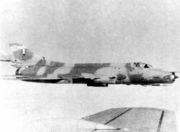
Peru is the only American export customer of the type. On April 24, 1992, Peruvian Fitters attacked a USAF C-130H Hercules of the 310th Airlift Squadron which was intercepted in the sea, west of Lima, injuring six of the fourteen crew members. Crew member Joseph C. Beard, Jr., was sucked from the cabin at 18,500 feet, and crew member Ronald Hetzel sustained severe injuries.
During the 1995 border war between Peru and Ecuador two Peruvian Sukhoi Su-22 were lost.
The Ecuadorian says that two Sukhoi Su-22M were shot down on 10 February 1995 by two Ecuadorian Air Force Mirage F.1. This version could not be proven through documentary evidence. However, according to official Peru Air Force sources, one Peruvian Su-22A Fitter-F was shot down by Ecuadorian anti-aircraft during a low flying ground-attack mission. The second Peru Air Force Sukhoi Su-22A Fitter-F was lost because of a fire in its jet-engine (mechanical failure).[5]
Peru Air Force's incident report is based on radio communications, radar information, testimony of the pilots and an analysis of the remains of the Su-22A Fitter-F founded in the Peruvian jungle (the other exploded before landfall). The analysis of the remains says that the Su-22A Fitter-F was impacted by Anti-Aircraft Artillery (AAA) this led to an uncontrollable jet-engine fire before two Ecuadorian Air Force Mirage F.1 reached the combat zone, both pilots, Comandante FAP Maldonado and Mayor FAP Caballero, were ejected but none survived. Attack missions continued until the end of hostilities on 14 February 1995.[6]
The Su-22s flew 45 sorties into the combat zone. A 20-strong force of Fitters was also set up at El Pato as a retaliatory force should Ecuador decide to attack the coastal port.[7]
Yemen
On 11 August 2009, Yemeni armed forces started Operation Scorched Earth in northern Yemen to fight the Sa'dah insurgency. Yemeni Air Force backed the army in the offensive performing air raids over rebel held positions. On 5 October 2009, a Yemeni Su-22 crashed when it was flying in formation with another aircraft, on the way back from a mission. The rebels claimed they shot it down, while Yemeni armed forces said it crashed due to technical problems.[8] Earlier on 2 October, the insurgents said they shot down a "MiG-21" while again the military insisted technical problems caused the crash.[9] On 8 November, a third Yemeni fighter aircraft reported to be a "Sukhoi" was destroyed. Again the military claimed it crashed due to technical problems, while the rebels claimed they shot it down.[10] The pilot ejected and was recovered by friendly forces.
Variants

Sources[2]
- Su-7IG (S-22I, 'Fitter-B')
- Su-7BM variable geometry wing demonstrator.
- Su-17 (S-32, 'Fitter-B')
- Limited production run based on the longer fuselage of the two-seat Su-7U trainer, with bulged dorsal spine for extra fuel (4,550 L/1,200 U.S. gal total). Retained Su-7's Lyulka AL-7F-1 engine. Manufactured 1969-1973.
- Su-17K - export version of the Su-17 for Egyptian Air Force
- Su-17M (S-32M, 'Fitter-C')
- First major production version, introduced Lyulka AL-21F-3 engine, twin pitot tubes, new navigation and attack computer (retaining Su-7BMK's SRD-5M ranging radar), angle of attack vane, single brake parachute. Variable-position intake centerbody providing maximum speed of Mach 2.1. First flight 28 December 1971 with V. S. Soloviev at the controls. The export version was designated Su-20, first flying 15 December 1972 with A. N. Isakov at the controls. Manufactured 1972-1975, entered service in 1973. Exported to Egypt, Poland, and Syria.
- Su-17M-28
- Testbed for Kh-28 (AS-9 Kyle) anti-radiation missile
- Su-17MKG
- Testbed for Kh-25 (AS-10 'Karen') and Kh-29 (AS-14 'Kedge') missiles
- Su-17R
- Small number of Su-17M aircraft equipped to carry reconnaissance pods. Equivalent export version designated Su-20R.
- Su-17M2 (S-32M2, 'Fitter-D')
- Nose extended 38 cm (15 in), deleting ranging radar and 'drooping' to improve pilot visibility. Fon-1400 laser rangefinder/marked-target seeker (LRMTS). ASP-17 and PBK-3-17s aiming avionics. RSBN-6S short-range navigation and instrument landing system. Undernose fairing for DISS-7 Doppler navigation radar. First flight 20 December 1973 with V. S. Ilyushin at the controls. Manufactured 1974-1977, entered service in 1975.
- Su-17M2D
- Test-fit of the Tumansky/Khatchaturov R-29BS-300 engine (shared with some MiG-23s), with 112.7 kN (25,335 lbf) afterburning thrust, in a bulged rear fuselage. Due to lack of performance advantage and decreased range due to higher fuel consumption, it was decided to offer this engine as an export version only. First flight 31 January 1975 with A. N. Isakov at the controls. The export variant was designated Su-22 (factory code S-32M2K, NATO 'Fitter-F'), manufactured 1977-1978.
- Su-17UM (S-52U, 'Fitter-E')
- First two-seat trainer version, based on the Su-17M2, but with a different, deeper fuselage with windscreen moved forward; same length as the original Su-17M. Internal fuel capacity reduced and port cannon deleted, but retained full avionics and armament. First flight 15 August 1975 with V. A. Krechetov at the controls. Test flights revealed longitudinal instability at high angles of attack which was remedied by enlarging the tail fin. Export version with the R-29 engine was designated Su-22U. Manufactured 1976-1978, entered service in 1976.
- Su-17M3 (S-52, 'Fitter-H')
- Based on the revised airframe of the Su-17UM, but with an avionics bay and an additional fuel tank in place of the rear cockpit, increasing the internal fuel capacity to 4850 l (1,280 U.S. gal). Doppler radar moved internally, removing the fairing. 'Klen-P' laser rangefinder/target designator. A launch rail for K-13 (AA-2 'Atoll') or R-60 (AA-8 'Aphid') was added between the two existing pylons on each wing. First flight 30 June 1976 with V. A. Krechetov at the controls. Export version with the R-29 engine and downgraded avionics (equivalent to Su-17M2) was designated Su-22M (factory designation S-52K, NATO 'Fitter-J') and first flew on 24 May 1977 with E. S. Soloviev at the controls. An export version with Su-17M3 avionics was designated Su-22M3 (factory S-52MK). Su-17 manufactured 1976-1981, Su-22M manufactured 1978-1984. Su-17M/Su-22M/Su-22M3 was the most numerous variant with almost 1,000 built.
- Su-17UM (S-52UM)
- The initial trainer version with the same avionics suite as the Su-17M.The export version was designated Su-22UM3 with R-29 engine, and Su-22UM3K with the AL-21 engine. Manufactured 1978-1982.
- Su-17UM3 (S-52UM3, 'Fitter-G')
- Revised trainer with the same avionics suite as the Su-17M3. First flight 21 September 1978 with Yu. A. Yegorov at the controls. The export version was designated Su-22UM3 with R-29 engine, and Su-22UM3K with the AL-21 engine. Manufactured 1978-1982.
- Su-17M4 (S-54, 'Fitter-K')
- Final production version with considerably upgraded avionics, including RSDN navigation (similar to LORAN), beacon navigation, inertial navigation, a more powerful (Klyon) 'Kлён-54' laser rangefinder, radio compass, and SPO-15LE ('Sirena') radar-warning system. Additional fuselage inlets (including ram-air inlet at the base of the fin) to improve engine-cooling air flow, fixed air intake shock cone. Many aircraft were equipped for the use of TV-guided missiles and BA-58 Vjuga pod for anti-radiation missiles. AL-21F-3 engine. Export version was designated Su-22M4 (factory S-54K). First flight 19 June 1980 with Yu. A. Yegorov at the controls. Su-17M4 was manufactured 1981-1988, Su-22M4 was manufactured 1983-1990.
- Su-20
- The initial export version of the Su-17M, (S-32MK).
- Su-22M5
- A Russian-French upgrade package offered for existing aircraft with modernized cockpit, HOTAS, improved avionic systems. Deletes the laser rangefinder in favor of Phazotron/Thomson-CSF 'Phathom' radar.
- Su-22U
- The S-52U two-seat combat-trainer, export version of the Su-17UM, with a completely re-designed nose housing the tandem cockpits for student and instructor.

- Gun pods such as the GSh-23 based UPK-23 and SPPU-22 were utilized by the Su-17, Su-20, and Su-22. The SPPU-22 ground attack variant featured 30 degrees of traverse.
- An experimental version of the Su-20 was built with fixed wings attached to an Su-17M fuselage, in an effort to increase Payload/range performance by eliminating the weight of the wing sweep system. Good results were obtained in flight tests in 1973 but further development was cancelled.
- Tactical Reconnaissance versions of all variants could be made by fitting the KKR (Kombinirovanny Konteiner Razvedy – combined reconnaissance pod) on the centre-line pylon.
In-house OKB designations
- S-22I
- The first prototype 'Variable-Geometry' Su-7, converted form a production Su-7BM, first flown on 2 August 1966.
- S-32
- The initial production version, dubbed Su-17 by the VVS (Voyenno-Vozdooshnyye Seely - Soviet air force).
- S-32M
- The Su-17 with the Lyul'ka AL-21F engine and re-structured fuselage plus several smaller modifications, resulting in na greater fuel capacithy and more weapons stations.
- S-32MK
- The Su-20 export version with revised armament options, and less sophisticated avionics. First flight 15 December 1972.
- S-32M2
- The Su-17M with improved flying controls and weapon-aiming equipment. Production carried out from 1975 to 1977
- S-32M2K
- The Su-22 export version of te Su-17M2 with a Tumansky R-29BS-300 engine.
- S-32M2D
- An Su-17 tested with ski landing gear, similar to that used on the S-26 (Su-7),used for [very] rough field landing and take-off tests.
- Su-52U
- The Su-17UM/Su-22U two-seat combat-trainer version with a completely re-designed nose housing the tandem cockpits for student and instructor.
- S-52
- In a reverse development the trainer modifications were adapted for a new Attack variant, the Su-17M3.
- S-52K
- An export variant of the S-52, given the designation Su-22M.
- S-52M3K
- Series production Su-22M3 aircraft with lasxer range-finder and avionics mods.
- S-52UK
- The trainer variant with all the S-32M2k structural modifications and a reduced wespons portfolio.
- S-52UM3
- The Su-17UM£ for the VVS with avionics and aero-dynamic changes.
- S-52UM3K
- The export version of the Su-17UM3.
- S-52R
- Tactical Reconnaissance Su-17M3R with a KKR (Kombinirovanny Konteiner Razvedy – combined reconnaissance pod) on the centre-line pylon.;S-54 Production Su-17M4 fighter-bombers.
- S-54K
- Export Su-17M4's, designated Su-22M4.
- S-54R
- Tactical reconnaissance Su-17M4R with a KKR (Kombinirovanny Konteiner Razvedy – combined reconnaissance pod) on the centre-line pylon.
Operators
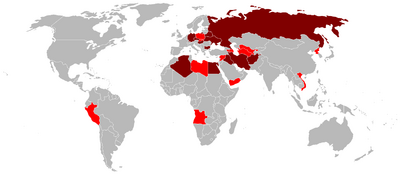 |
|
| Blue = Current | Red = Former |
|---|---|
Current operators
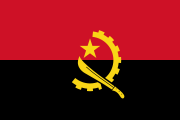 Angola
Angola- The People's Air and Air Defence Force of Angola operates 8 Su-22 variants.
 Libya
Libya- The Libyan Air Force operated as many as 90 Su-22, with around 40 Su-22M3 and Su-22UM3K aircraft currently in service.
 Poland
Poland- The Polish Air Force remains a major operator, with 48 Su-22M4K and Su-22UM3K aircraft in service of 137 delivered. All Polish Su-22 will be retired before 2012.
 Syria
Syria- 60 Su-22 aircraft serve with the Syrian Air Force.
 Vietnam
Vietnam- Around 145 Su-22M4 examples serve with the Vietnam People's Air Force.
 Yemen
Yemen- 50 Su-22 have served with the Yemen Air Force, with a number remaining active.
Former operators
 Afghanistan
Afghanistan - More than 70 were sent to the Afghan Air Force from 1982, including 45 Su-22M-4 delivered from 1984.
 Azerbaijan
Azerbaijan- The Azerbaijan Air Force
 Algeria
Algeria- The Algerian Air Force operated 32, although none remain in service.
 Belarus
Belarus- The Belarusian Air Force inherited Su-17s from the Soviet Air Force, but none remain in service.
 Bulgaria
Bulgaria- The Bulgarian Air Force operated 18 Su-22M4 and 5 Su-22UM aircraft. All are retired.

 Czech Republic
Czech Republic- The Czech Air Force inherited 31 Su-22M-4 and 5 Su-22UM-3K. All were retired in 2002.[11]
 Czechoslovakia
Czechoslovakia- Czechoslovakian Air Force Su-22 (49 Su-22M-4 and 8 Su-22UM-3K in 1992) inventory was split between the Czech Republic and Slovakia in 1993.
 East Germany
East Germany- The Air Forces of the National People's Army operated the Su-22 until unification, when they were passed on to the Luftwaffe.
- Volksmarine
 Egypt
Egypt- The Egyptian Air Force operated 48 of Su-20/22 aircraft, although all have been withdrawn, being replaced by F-4 Phantom II and F-16 Fighting Falcons in their role.
 Germany
Germany- A number of Su-22 aircraft were inherited from East Germany, although these did not serve in the Luftwaffe, but some of them have been painted with Luftwaffe color scheme for test and evaluation.

 Hungary
Hungary- The Hungarian Air Force maintained 12 Su-22M3 and 3 Su-22UM-3 aircraft from 1983. Two single seat and one training aircraft crashed. Withdrawn from service in 1997.
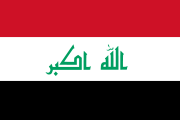 Iraq
Iraq- The Iraqi Air Force received a number of Su-22 models, of which some were taken by Iran in 1991. None survived the 2003 invasion of Iraq by the United States.
 Iran
Iran- The Islamic Republic of Iran Air Force operated a number of various Su-20 and Su-22 aircraft through the 1980s and 1990s, including examples flown to Iran from Iraq in 1991. While apparently non-operational, many remain in reserve or stored status.
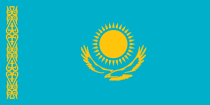 Kazakhstan
Kazakhstan- Su-17 aircraft were inherited by the Armed Forces of the Republic of Kazakhstan, but never put into service.
 Peru
Peru- The Air Force of Peru acquired 24 Su-22M, 24 Su-22M3, and 5 Su-22UM3, 11 remain in reserve status.
 Russia
Russia- The Russian Air Force inherited Soviet Su-17 aircraft, but has withdrawn the type from service. At least one example remains flying as a chase aircraft operated by Sukhoi at their KnAAPO facility.
- Russian Naval Aviation
 Slovakia
Slovakia- The Air and Air Defense Forces inherited 18 Su-22M-4 and 3 Su-22UM-3K aircraft from Czechoslovakia in 1993. In 1999 6 Su-22M-4 and in 2001 4 Su-22M-4 and 1 Su-22UB were sold to Angola while rest of the fleet was grounded and is being used as museum exhibits and as teaching aid in flight schools.[12]
 Soviet Union
Soviet Union- Soviet Union Su-22s were split between post-USSR countries.
- Soviet Air Force
- Soviet Naval Aviation
 Turkmenistan
Turkmenistan- A number of Su-17 aircraft were inherited by the Military of Turkmenistan, but they were never put into service.
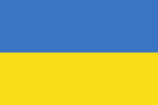 Ukraine
Ukraine- Ukrainian Air Force. 40 Su-17 aircraft were inherited from the Soviet Union and most of them now retired from service, but few are stored.
 Uzbekistan
Uzbekistan- A number of Su-17 aircraft were inherited by the Military of Uzbekistan, now all are retired and stored at Chirchiq.
Specifications (Su-17M4)

Data from Sukhoi[13]
General characteristics
- Crew: One
- Length: 19.02 m (62 ft 5 in)
- Wingspan:
- Spread: 13.68 m (44 ft 11 in)
- Swept: 10.02 m (32 ft 10 in)
- Height: 5.12 m (16 ft 10 in)
- Wing area:
- Spread: 38.5 m² (415 ft²)
- Swept: 34.5 m² (370 ft²)
- Empty weight: 12,160 kg (26,810 lb)
- Loaded weight: 16,400 kg (36,155 lb)
- Max takeoff weight: 19,430 kg (42,835 lb)
- Powerplant: 1× Lyulka AL-21F-3 afterburning turbojet
- Dry thrust: 76.4 kN (17,185 lbf)
- Thrust with afterburner: 109.8 kN (24,675 lbf)
- Fuel capacity: 3,770 kg (8,310 lb)
Performance
- Maximum speed:
- Sea level: 1,400 km/h (755 knots, 870 mph)
- Altitude: 1,860 km/h (1,005 knots, 1,155 mph, Mach 1.7)
- Range:
- Combat: 1,150 km (620 nm, 715 mi) in hi-lo-hi attack with 2,000 kg (4,410 lb) warload
- Ferry: 2,300 km (1,240 nmi, 1,430 mi)
- Service ceiling: 14,200 m (46,590 ft)
- Rate of climb: 230 m/s (45,275 ft/min)
- Wing loading: 443 kg/m² (90.77 lb/ft²)
- Thrust/weight: 0.68
- G-force limit: 7
- Airframe lifespan: 2,000 flying hours, 20 years
Armament

- 2 × 30 mm Nudelman-Rikhter NR-30 cannon, 80 rpg
- Two underwing launch rails for R-60 (AA-8 'Aphid') air-to-air missiles for self-defense
- Up to 4000 kg (8,820 lb) on ten hardpoints (three under the fixed portion of each wing, four on the fuselage sides), including free-fall bombs, rocket pods, cluster bombs, SPPU-22-01 cannon pods with traversable barrels, ECM pods, napalm tanks, and nuclear weapons. Current aircraft compatible with Kh-23 (AS-7 'Kerry'), Kh-25 (AS-10 'Karen'), Kh-29 (AS-14 'Kedge'), and Kh-58 (AS-11 'Kilter') guided missiles as well as electro-optical and laser-guided bombs.
See also
Related development
- Sukhoi Su-7
Comparable aircraft
- A-7 Corsair II
- IAR 93
- SEPECAT Jaguar
- Soko J-22 Orao
- Nanchang Q-5
Related lists
- List of military aircraft of the Soviet Union and the CIS
- List of fighter aircraft
References
- ↑ Green, W; Swanborough, G (2001). The great book of fighters. MBI Publishing. ISBN 0760311943.
- ↑ 2.0 2.1 2.2 2.3 2.4 2.5 "Sukhoi Su-17". Sukhoi Company Museum. http://sukhoi.org/planes/museum/su17/. Retrieved 2007-04-15.
- ↑ 3.0 3.1 3.2 3.3 Markovskiy, Viktor (2000). "Жаркое Небо Афганистана" (in Russian). Техника - Молодежи.
- ↑ 4.0 4.1 http://www.au.af.mil/au/afhra/avc_query.asp
- ↑ Diario "El Mundo", edición Nº 114 del 4-5 de Marzo de 1995, página 2
- ↑ “Peruvian Fitters Unveiled” in Air Forces Monthly Review, issue August 2003
- ↑ Exclusive “Tiger Sukhois Frogfoots & Fitters in Peru” in Air Forces Monthly Review, issue march 2006, page 48
- ↑ http://www.presstv.ir/detail.aspx?id=107906§ionid=351020206
- ↑ http://english.aljazeera.net/news/middleeast/2009/10/2009102103834822778.html
- ↑ "Yemen rebels 'down fighter jet'". BBC News. 9 November 2009. http://news.bbc.co.uk/2/hi/8349984.stm. Retrieved 24 May 2010.
- ↑ Info about Czech air force
- ↑ Independent report about weapon export from Slovakia by SFPA
- ↑ Sukhoi. "Su-22M4". http://sukhoi.org/planes/military/su22m4/lth/. Retrieved 2007-04-15.
External links
- from FAS
- List of all Su-17 (Su-20 and Su-22) fighters used by Polish Air Force
- from Russian Military Analysis
|
|||||||||||||||||||||||
|
||||||||||||||